Indianz.Com > News > Cronkite News: Officials continue push for COVID-19 vaccine
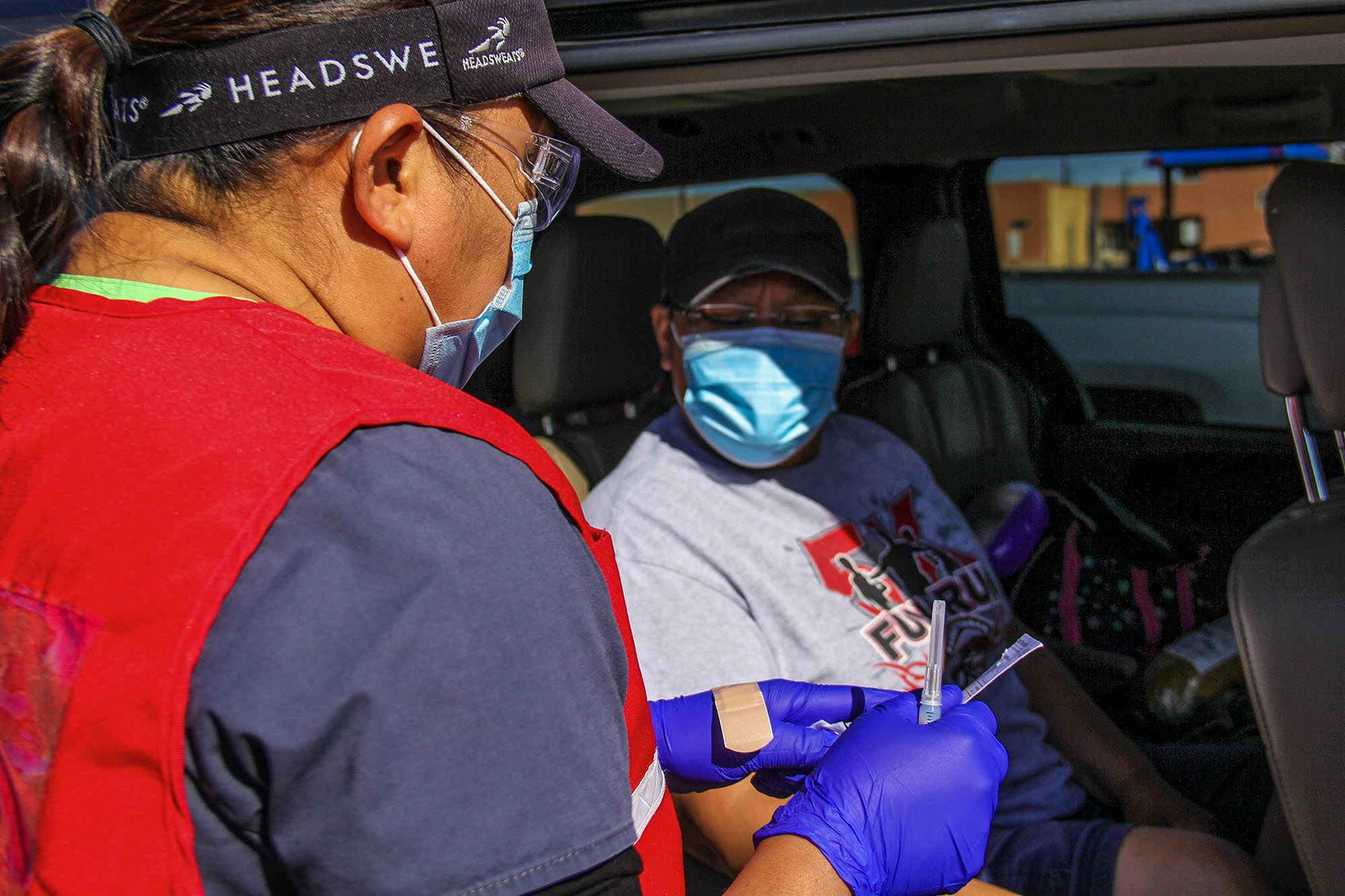 Drusilla Hobbs, 38, a full-time student, receives information regarding her vaccination card during a COVID-19 vaccine event at the Kayenta Health Center on the Arizona portion of the Navajo Nation. (Photo by Travis Robertson/Cronkite News)
Drusilla Hobbs, 38, a full-time student, receives information regarding her vaccination card during a COVID-19 vaccine event at the Kayenta Health Center on the Arizona portion of the Navajo Nation. (Photo by Travis Robertson/Cronkite News)Vaccination rates drop, but officials still hopeful state can hit goal
Thursday, June 10, 2021
Cronkite News
WASHINGTON – COVID-19 vaccination rates have fallen sharply in Arizona, but health officials are still hopeful the state can reach a Centers for Disease Control and Prevention goal of vaccinating 70% of Arizonans by July 4.
To do that, the state is shifting its efforts from mass-vaccination sites to more community out-reach efforts and continuing to expand vaccination opportunities to include pharmacies, doctors’ offices, community events and mobile pop-up events.
“I am fearful with the decreased demand it’s going to be harder to reach that 70%, but I am hopeful Arizona will,” Dr. Cara Christ, the Arizona Department of Health Services director, said in a briefing last Friday.
As of Friday, almost 3.4 million Arizonans had received at least one dose of the vaccine, or about 46.8% of the state population. The department said just under 2.9 million have been fully vaccinated.
Christ said the state is in the process of “phasing down” its large-scale vaccination sites, with decreased days and hours of operation leading up to the closure this month. The Gila River Arena will be the last of those sites to close, on June 28, which means people will have to schedule their first shot by June 5 if they want to follow up with their second shot at the site.
One health expert welcomed the shift toward more community-based sites, but said it should have come much sooner.
“The state vaccination sites were high volume for a particular demographic, which was wealthy, white, and retired people who were able to go whenever they wanted to get an appointment and access technology,” said Will Humble, executive director of the Arizona Public Health Association.
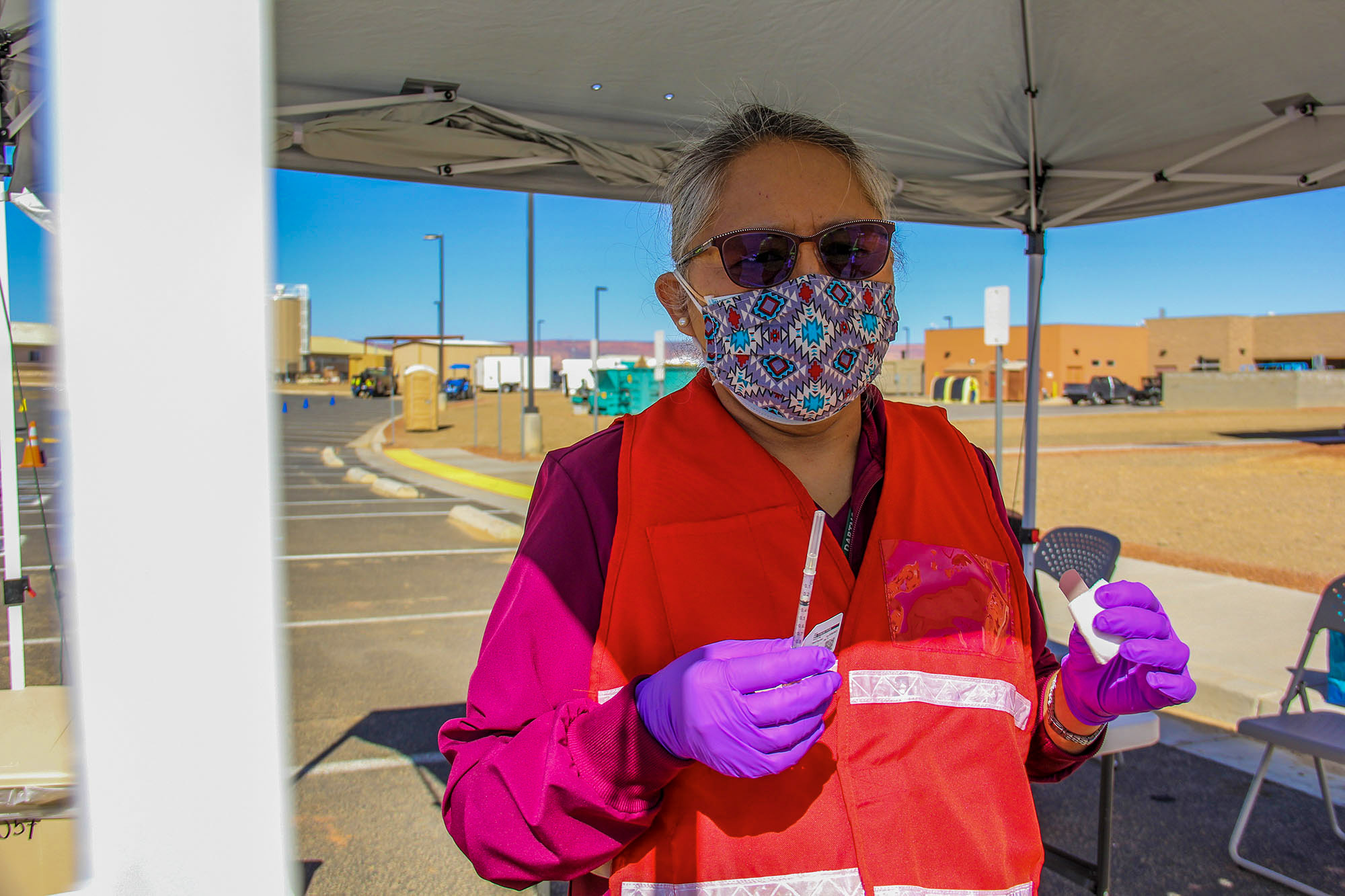 Wanda Begay prepares a dose of COVID-19 vaccine for a waiting patient at the Kayenta Health Center on the Arizona portion of the Navajo Nation. (Photos by Travis Robertson/Cronkite News)
Wanda Begay prepares a dose of COVID-19 vaccine for a waiting patient at the Kayenta Health Center on the Arizona portion of the Navajo Nation. (Photos by Travis Robertson/Cronkite News)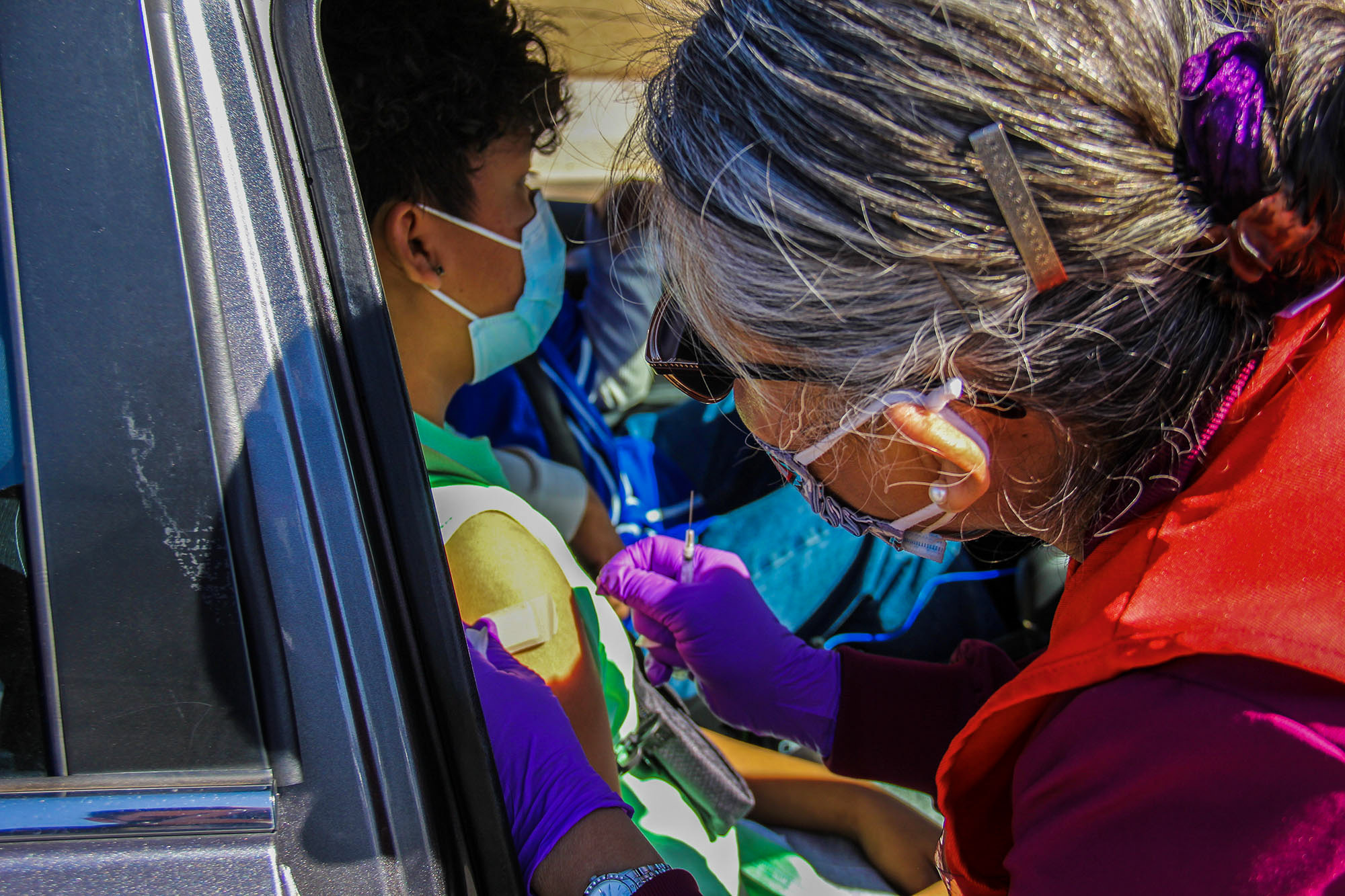 Wanda Begay administers the vaccine to Savriono Cly, 16, at the Kayenta Health Center on the Arizona portion of the Navajo Nation. (Photos by Travis Robertson/Cronkite News)
Wanda Begay administers the vaccine to Savriono Cly, 16, at the Kayenta Health Center on the Arizona portion of the Navajo Nation. (Photos by Travis Robertson/Cronkite News)Note: This story originally appeared on Cronkite News. It is published via a Creative Commons license. Cronkite News is produced by the Walter Cronkite School of Journalism and Mass Communication at Arizona State University.
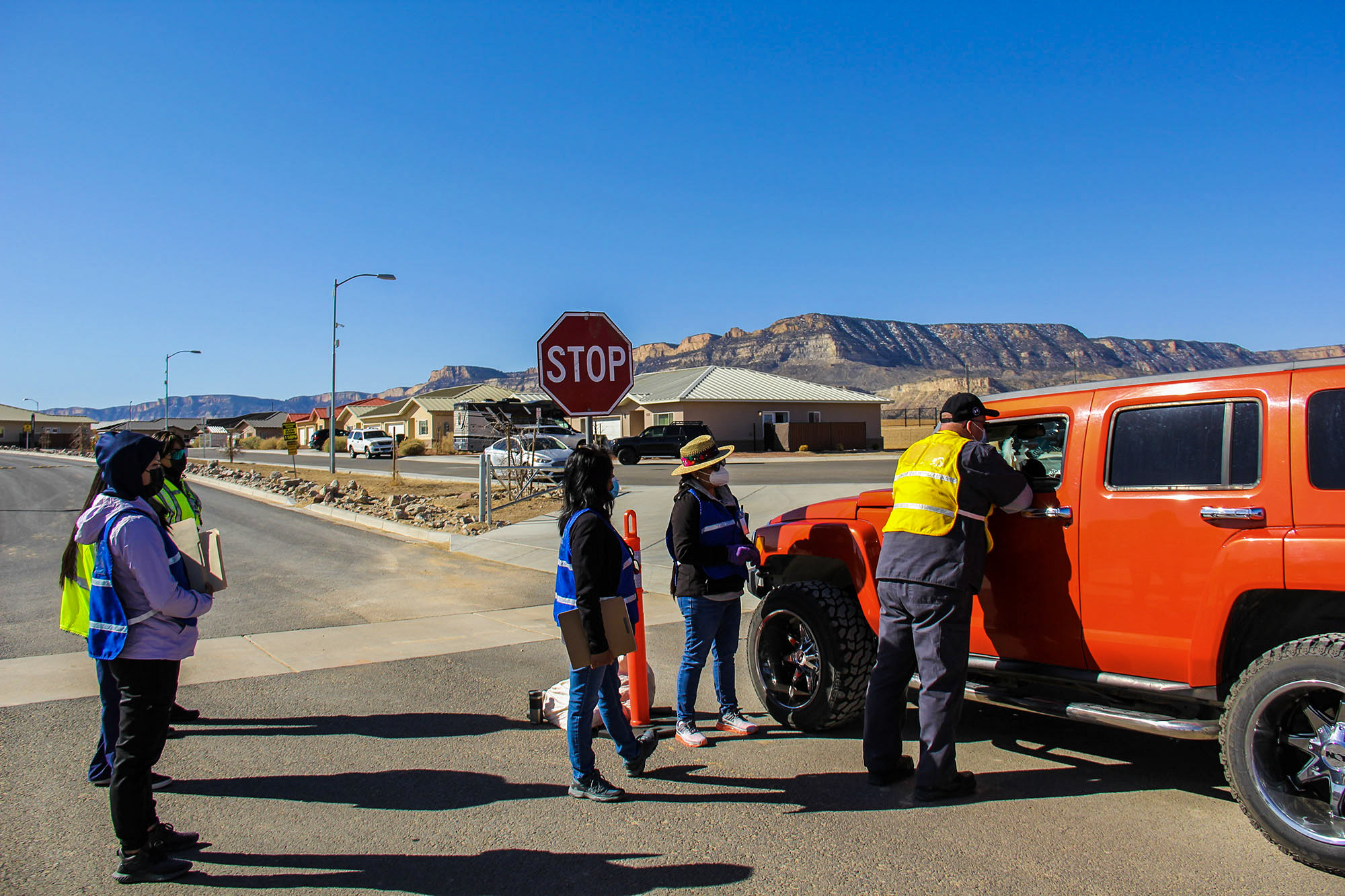 Patients check in at the Kayenta Health Center on the Navajo Nation for vaccinations. Recipients could choose between the one-dose Johnson & Johnson vaccine or a two-dose vaccination from Pfizer or Moderna. (Photo by Travis Robertson/Cronkite News)
Patients check in at the Kayenta Health Center on the Navajo Nation for vaccinations. Recipients could choose between the one-dose Johnson & Johnson vaccine or a two-dose vaccination from Pfizer or Moderna. (Photo by Travis Robertson/Cronkite News) Shots for a hard-hit tribe
Cronkite News
The Navajo Nation confirmed its first COVID-19 case on March 17, 2020, after a man with symptoms sought help at the Kayenta Health Center, in the northern part of the sprawling reservation.
The nation soon became one of the country’s hotspots for the disease, with more than 30,000 cases and about 1,300 deaths to date.
More than a year after that first case, the clinic in Kayenta, located 300 miles north of Phoenix, is providing vaccinations to tribal members. This event was on April 10, and provided Moderna, Pfizer and Johnson & Johnson vaccines to individuals 16 or older.
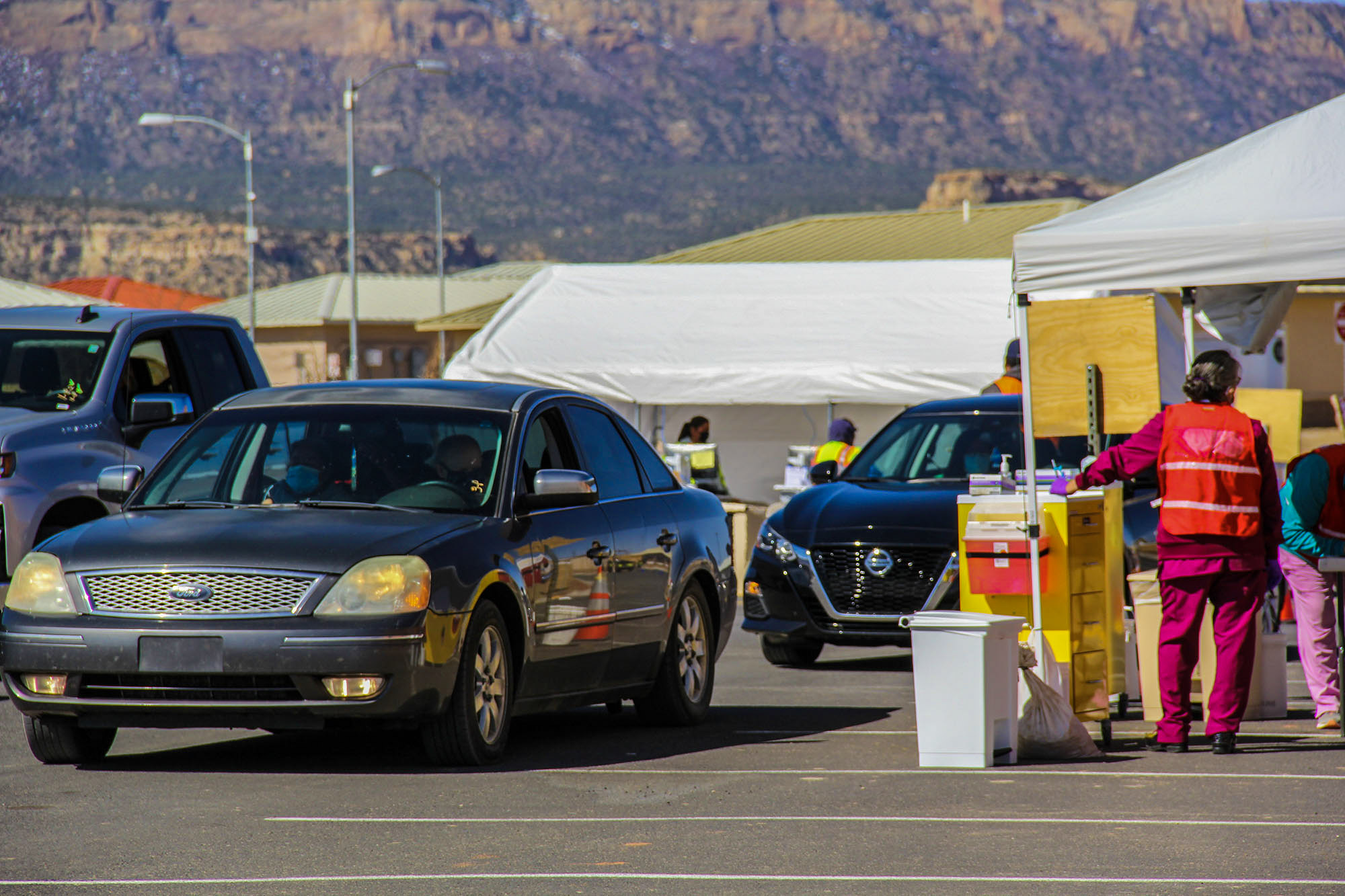 Wanda Begay, chief nurse executive at the Kayenta Health Center on the Arizona portion of the Navajo Nation, waits to deliver the next dose of vaccine. (Photos by Travis Robertson/Cronkite News)
Wanda Begay, chief nurse executive at the Kayenta Health Center on the Arizona portion of the Navajo Nation, waits to deliver the next dose of vaccine. (Photos by Travis Robertson/Cronkite News)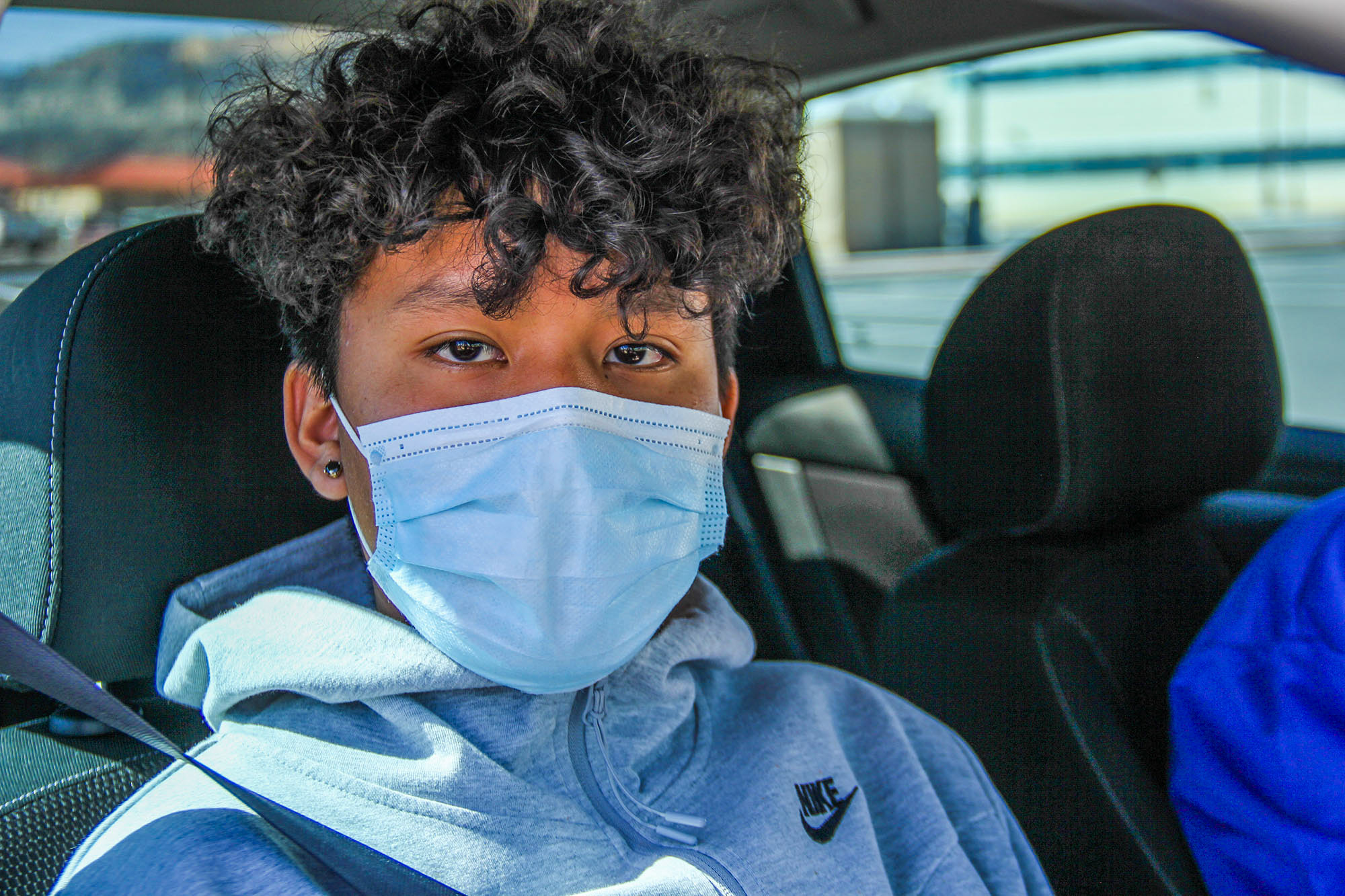 Savriono Cly received his first dose of the Pfizer vaccine at the Kayenta Health Center on the Arizona portion of the Navajo Nation. “It feels good knowing that I probably most likely won’t get COVID-19,” he says. (Photo by Travis Robertson/Cronkite News)
Savriono Cly received his first dose of the Pfizer vaccine at the Kayenta Health Center on the Arizona portion of the Navajo Nation. “It feels good knowing that I probably most likely won’t get COVID-19,” he says. (Photo by Travis Robertson/Cronkite News)Note: This story originally appeared on Cronkite News. It is published via a Creative Commons license. Cronkite News is produced by the Walter Cronkite School of Journalism and Mass Communication at Arizona State University.
Search
Filed Under
Tags
More Headlines
Native America Calling: How Native literature is changing the mainstream narrative
Native America Calling: No ordinary animal
Native America Calling: Safeguards on Artificial Intelligence
NAFOA: 5 Things You Need to Know this Week
Chuck Hoskin: Cherokee Nation takes the lead for our environment
Native America Calling: Earth Day assessment for Native peoples
Cronkite News: Gathering addresses ‘epidemic’ among Native people
VIDEO: Cody Desautel on tribes and federal forest management
AUDIO: Legislative Hearing on Discussion Draft of Forest Management Bill
Native America Calling: Remembering the 1974 Navajo border town murders
Native America Calling: Can the right approach close the Native immunization gap?
Cronkite News: Long COVID cases remain high in Arizona
Native America Calling: Eyes in the sky for development, public safety, and recreation
Native America Calling: Three new films offer diverse views of Native life
NAFOA: 5 Things You Need to Know this Week
More Headlines
Native America Calling: No ordinary animal
Native America Calling: Safeguards on Artificial Intelligence
NAFOA: 5 Things You Need to Know this Week
Chuck Hoskin: Cherokee Nation takes the lead for our environment
Native America Calling: Earth Day assessment for Native peoples
Cronkite News: Gathering addresses ‘epidemic’ among Native people
VIDEO: Cody Desautel on tribes and federal forest management
AUDIO: Legislative Hearing on Discussion Draft of Forest Management Bill
Native America Calling: Remembering the 1974 Navajo border town murders
Native America Calling: Can the right approach close the Native immunization gap?
Cronkite News: Long COVID cases remain high in Arizona
Native America Calling: Eyes in the sky for development, public safety, and recreation
Native America Calling: Three new films offer diverse views of Native life
NAFOA: 5 Things You Need to Know this Week
More Headlines